Overview
What Is Chronic Lymphocytic Leukemia (CLL)?
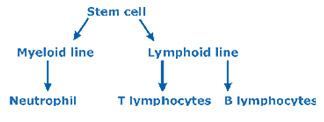
Chronic lymphocytic leukemia (CLL) is a type of leukemia that leads to overproduction of certain white blood cells. It typically progresses more slowly than acute leukemias, but in certain people, the disease can become aggressive.
CLL is found almost exclusively in adults. It is rare in people younger than age 40 and is extremely rare in children. Most develop the disease after age 60 and often individuals are without symptoms. Many do not need immediate treatment and can go for years before treatment is required.
In Europe and North America, CLL is the most common form of leukemia, accounting for 25-40% of all leukemia. In Asia, CLL accounts for only 5% of leukemia, and it is about 1.26-3.5% in China.
Symptoms
Symptoms of Chronic Lymphocytic Leukemia (CLL)
arly in the disease, there may be no noticeable symptoms, and many cases are diagnosed from routine blood tests. The following are the most common symptoms of chronic lymphocytic leukemia. However, each individual may experience symptoms differently.
Symptoms may include:
• Persistent weakness or fatigue
• Swollen lymph nodes
• Enlarged spleen, which can cause loss of appetite
• Enlarged liver
• Fever
• Night sweats
• Weight loss
• Frequent infections
• Easy bruising or bleeding
The symptoms of chronic lymphocytic leukemia may resemble other blood disorders or medical problems. Always consult your doctor for a diagnosis.
Risk Factors
Risk Factors for Chronic Lymphocytic Leukemia (CLL)
Risk factors for CLL include the following:
• Being middle-aged or older, male, or white
• A family history of CLL or cancer of the lymph system
• Having relatives who are Russian Jews or Eastern European Jews
Staging
Chronic Lymphocytic Leukemia (CLL) Staging
Chronic lymphocytic leukemia (CLL) is the only type of leukemia with well-defined stages.
• The Rai system of staging
• Stage 0 CLL
In stage 0, your blood has too many lymphocytes, called lymphocytosis. You have more than 5,000 to 10,000 lymphocytes per cubic millimeter. You don't have any other signs or symptoms of leukemia. This stage is considered low risk, which means people tend to have longer survival rates and generally have no or few symptoms.
• Stage 1 CLL
In stage 1 (I), your blood has too many lymphocytes, called lymphocytosis, and your lymph nodes are larger than normal. This stage is considered intermediate risk.
• Stage 2 CLL
In stage 2 (II), your blood has too many lymphocytes, called lymphocytosis, and your liver may be swollen, called hepatomegaly. Or your spleen may be swollen, called splenomegaly. Or they may both be swollen. Your lymph nodes may also be larger than normal. This stage is also considered intermediate risk.
• Stage 3 CLL
In stage 3 (III), your blood has too many lymphocytes, called lymphocytosis, and you have too few red blood cells, called anemia. Your lymph nodes, liver, or spleen may also be larger than normal. This stage is considered high risk.
• Stage 4 CLL
In stage 4 (IV), your blood has too many lymphocytes and too few platelets, called thrombocytopenia. Your lymph nodes, liver, or spleen may be larger than normal, and you may have too few red blood cells. This stage is considered high risk.
Diagnosis
How Is Chronic Lymphocytic Leukemia Diagnosed?
Tests that examine the blood, bone marrow, and lymph nodes are used to detect (find) and diagnose chronic lymphocytic leukemia.
Procedures and tests used to diagnose CLL:
• Physical exam and history
• Complete blood count (CBC)
• Cytogenetic analysis
• Immunophenotyping
• Bone marrow aspiration and biopsy
Additional blood tests and other evaluation procedures may also be performed.
Treatments
Treatment Options for Chronic Lymphocytic Leukemia (CLL)
There are different types of treatment for patients with chronic lymphocytic leukemia.
Different types of treatment are available for patients with chronic lymphocytic leukemia.
• How treatments are chosen
Specific treatment for chronic lymphocytic leukemia will be determined by your doctor based on:
• Your age, overall health, and medical history
• Extent of the disease
• Other traits of the disease, such as chromosome changes in the leukemia cells
• Whether or not you are having symptoms
• Your tolerance for specific medications, procedures, or therapies
• Expectations for the course of the disease
• Your opinion or preference
• Biologic therapy
Biologic therapy is treatment with substances that are made naturally in the body or that can block the growth of cancer cells.
Biologics include nonspecific immunomodulating agents, interferons, interleukins, colony-stimulating factors, monoclonal antibodies and vaccines.
• Chemotherapy
The use of anticancer drugs to shrink or kill cancerous cells and reduce cancer spreading to other parts of the body.
• Radiation therapy
The use of high-energy radiation to kill or shrink cancer cells, tumors, and non-cancerous diseases.
• Targeted therapies
Targeted therapies can target cancerous cells without affecting healthy tissue, unlike radiation and chemotherapy treatments.
Monoclonal antibody therapy is a type of targeted therapy used in the treatment of chronic lymphocytic leukemia.
• Watchful waiting
Watchful waiting is closely monitoring a patient's condition without giving any treatment until symptoms appear or change.
(The content above extract from stanfordhealthcare.org)
-
-
Diseases ·
-


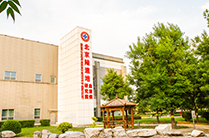
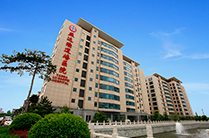



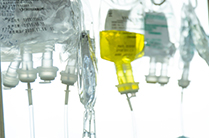

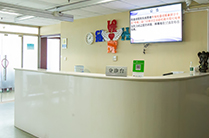




 京公网安备13108202000843号
京公网安备13108202000843号